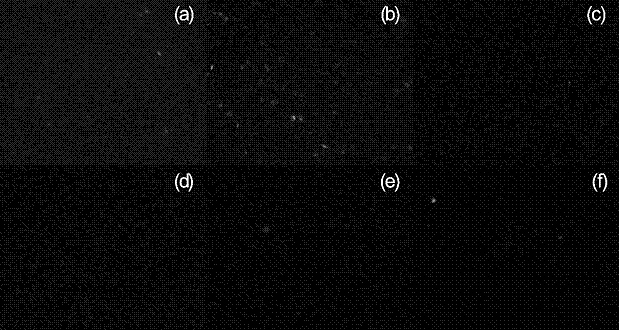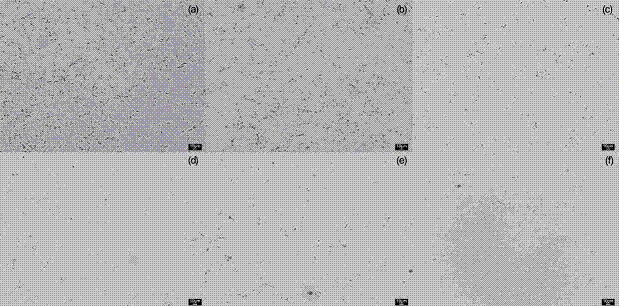Antifouling coating material based on amphiphilic sol and preparation method thereof
An anti-fouling coating and coating material technology, applied in the direction of coating, etc., can solve the problems of difficult synthesis technology and screening, short anti-fouling period, complicated process, etc., and achieve the effect of significant anti-protein adsorption.
- Summary
- Abstract
- Description
- Claims
- Application Information
AI Technical Summary
Problems solved by technology
Method used
Image
Examples
Embodiment 1
[0029] In a three-necked flask equipped with a stirrer, a thermometer, and a dropping funnel, add 30g of octyltrimethoxysilane, 48g of ethyl orthosilicate, 22g of octadecyltrimethoxysilane, and 15g of polyethylene glycol siloxane , 20g of silica sol, 100g of absolute ethanol, 10g of hydrochloric acid, and 10g of deionized water were heated to 50°C, kept at reflux and stirred for 12 hours, and cooled to obtain an amphiphilic sol. The sol is uniformly mixed with fillers, resins, additives and other components to prepare a coating. Among them, amphiphilic sol accounted for 35 wt%, dihydroxy-terminated polydimethylsiloxane 7 wt%, silica powder 15 wt%, titanium dioxide powder 3 wt%, diluent 36 wt%, catalyst 3 wt% %, leveling agent 1wt%, the coating is cured at 30 ℃ to form a film.
Embodiment 2
[0031] In a three-necked flask equipped with a stirrer, a thermometer, and a dropping funnel, add 50g of tetraethyl orthosilicate, 16g of hexadecyltrimethoxysilane, 25g of methyltrimethoxysilane, and 10g of polyethylene glycol siloxane , 15g of zirconia sol, 100g of absolute ethanol, 10g of deionized water and 5g of tetraethyl titanate, the temperature was controlled to 30°C, kept at reflux and stirred for 48 hours, then cooled to obtain the sol. The sol is mixed with a diluent, a leveling agent, etc. to prepare a coating material. Among them, the amphiphilic sol accounts for 30wt%, diluent 38wt%, ferric oxide powder 10wt%, leveling agent 2wt%, and the coating is cured at room temperature to form a film coating.
Embodiment 3
[0033] In a three-necked flask equipped with a stirrer, a thermometer, and a dropping funnel, add 30 g of methyl orthosilicate, 10 g of isobutyltrimethoxysilane, 23 g of dodecyltrichlorosilane, and 5 g of polyethylene glycol under nitrogen. Siloxane, 27g ZrCl4, 70g absolute ethanol, 15g deionized water and 3g nitric acid were heated up to 40°C while stirring, kept at reflux and stirred for 18 hours to obtain a sol. The sol is mixed with organic fluorosilicone resin, diluent, catalyst, cross-linking agent and leveling agent to prepare coating. Among them, the sol accounts for 30wt%, organic fluorine-silicone resin 20wt%, diluent 30wt%, catalyst 1wt%, crosslinking agent 2wt%, ferric oxide powder 5wt%, zirconia powder 10wt% %, leveling agent 2 wt%, the coating is cured at room temperature to form a film coating.
PUM
 Login to View More
Login to View More Abstract
Description
Claims
Application Information
 Login to View More
Login to View More - R&D
- Intellectual Property
- Life Sciences
- Materials
- Tech Scout
- Unparalleled Data Quality
- Higher Quality Content
- 60% Fewer Hallucinations
Browse by: Latest US Patents, China's latest patents, Technical Efficacy Thesaurus, Application Domain, Technology Topic, Popular Technical Reports.
© 2025 PatSnap. All rights reserved.Legal|Privacy policy|Modern Slavery Act Transparency Statement|Sitemap|About US| Contact US: help@patsnap.com



